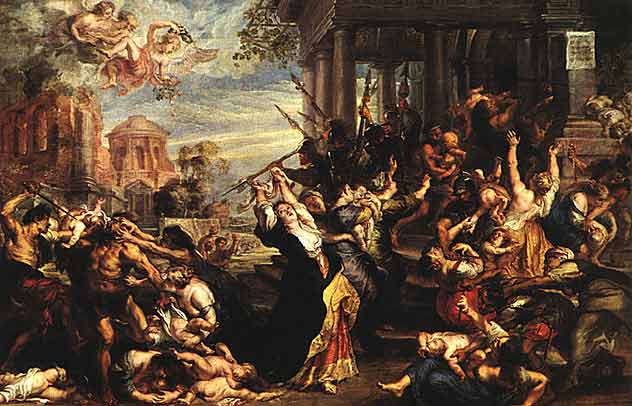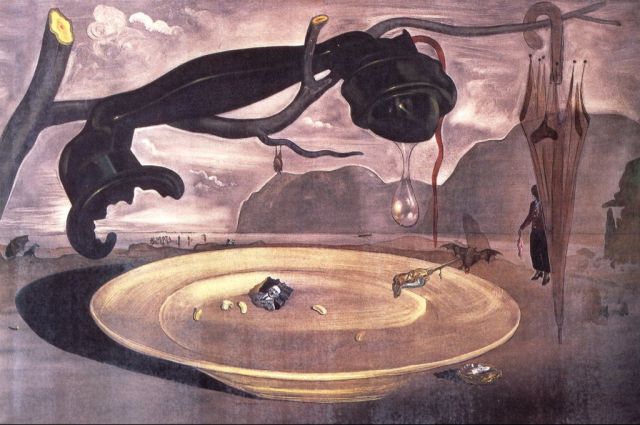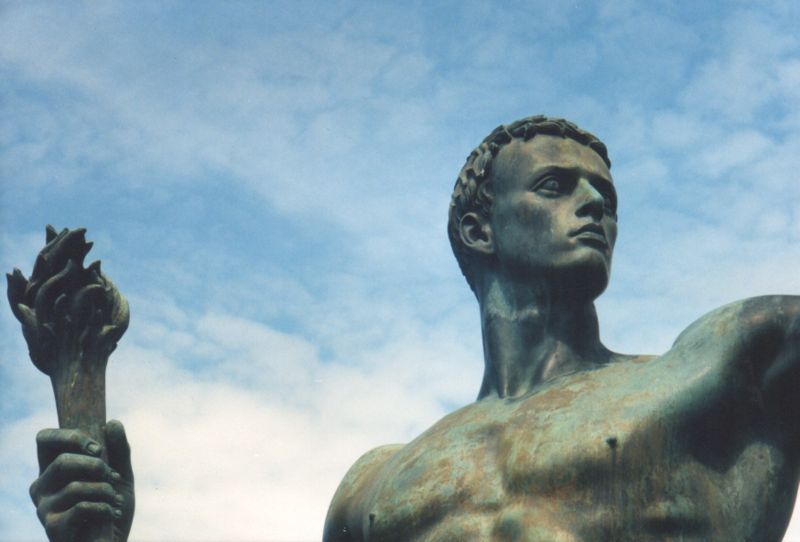On 6 Nov, 2010 With
The Art of the Third Reich, the officially approved art produced in Nazi Germany between 1933 and 1945, was characterized by a style ofRomantic realism based on classical models. While banning modern styles as degenerate, the Nazis promoted paintings and sculptures that were narrowly traditional in manner and that exalted the “blood and soil” values of racial purity, militarism, and obedience. Other popular themes for Nazi art were the Volk at work in the fields, a return to the simple virtues of Heimat (love of homeland), the manly virtues of the National Socialist struggle, and the lauding of the female activities of child bearing and raising (Kinder, Küche, Kirche). Similarly, music was expected to be tonal and free of jazz influence; films and plays were censored. Nazi art bears a close similarity to…
Read More
On 5 Nov, 2010 With
Such was ancient Thebes—a city so populous that, according to ancient writers, in times of war 10,000 soldiers issued from each of her hundred gates, forming an army of 1,000,000 men. That these magnificent ruins are the remains of “the city of an hundred gates,”—”the earliest capital in the world,” cannot be doubted. According to the measurements made by the French, their distance from the sea on the north, is 680,000 metres (850 miles), and from Elephantine on the south, 180,000 metres (225 miles)—corresponding exactly with the 6,800 and 1,800 stadia of Herodotus. The circumference of the ruins is about 15,000 metres (17½ miles), agreeing with the 140 stadia given by Diodorus as the circumference of Thebes. The origin of…
Read More
On 4 Nov, 2010 With
Massacre of the Innocents (1611) by Peter Paul Rubens. Massacre of the Innocents (1611) by Peter Paul Rubens. Sold for £49.5m in 2002, at Sotheby’s, London. This work by the Flemish Baroque artist is the most expensive painting by an Old Master.
Read More
On 3 Nov, 2010 With
During Adolf Hitler’s childhood, academics were not his strong point. In grade school, Hitler’s grades in Mathematics, Science, History, German, and French were adequate at best and this greatly displeased his father, Alois Schickelgruber. However, in the early 1900s Adolf Hitler showed an interest in art and began to excel very quickly. Hitler’s average grades were good enough to get him accepted in a university preparatory “gymnasium” or the technical/scientific, Realschule. He chose Realschule because they offered a course in drawing. In 1906, Adolf was permitted to visit Vienna, but he was unable to gain admission to their prestigious art school. Nonetheless, this did not stop him from creating more works of art. Hitler went on to produce many drawings…
Read More
On 2 Nov, 2010 With
Heroic realism is a term which has sometimes been used to describe art used as propaganda. Examples include the Socialist realism style associated with Communist regimes, and the very similar art style associated with Fascism. Its characteristics are realism and the depiction of figures as ideal types or symbols, often with explicit rejection of modernism in art (as “bourgeois” or “degenerate”). Purposes Heroic realism designs were used to propagate the revolution in the Soviet Union during Lenin’s time. Lenin doubted that the illiterate population would understand what abstract visual images were intended to communicate. He also thought that artists, such as constructivists and productivists, may have had a hidden agenda against the government. Indeed, such movements as Cubism were denounced as bourgeois and criticized for failure to draw on…
Read More
On 1 Nov, 2010 With
Émile Schuffenecker Émile Schuffenecker (December 8, 1851 – July 31, 1934) was a French Post-Impressionist artist, painter, art teacher and art collector. A friend of Paul Gauguin and Odilon Redon, and one of the first collectors of works by Vincent van Gogh, Schuffenecker was instrumental in establishing the Volpini exhibition, in 1889. His own work, however, tends to have been neglected since his death—and even worse, recent season campaigns in the media have reactivated resentments virulent since the late 1920s, when Schuffenecker was suspected to haveimitated the work of other contemporary artists, among them, Van Gogh. Still a contentious issue, it has not been established whether he produced forgeries. Meanwhile, serious scholarly research at least has provided the base for a sober art historical approach…
Read More




